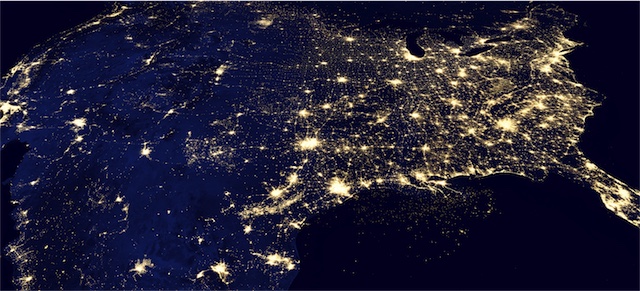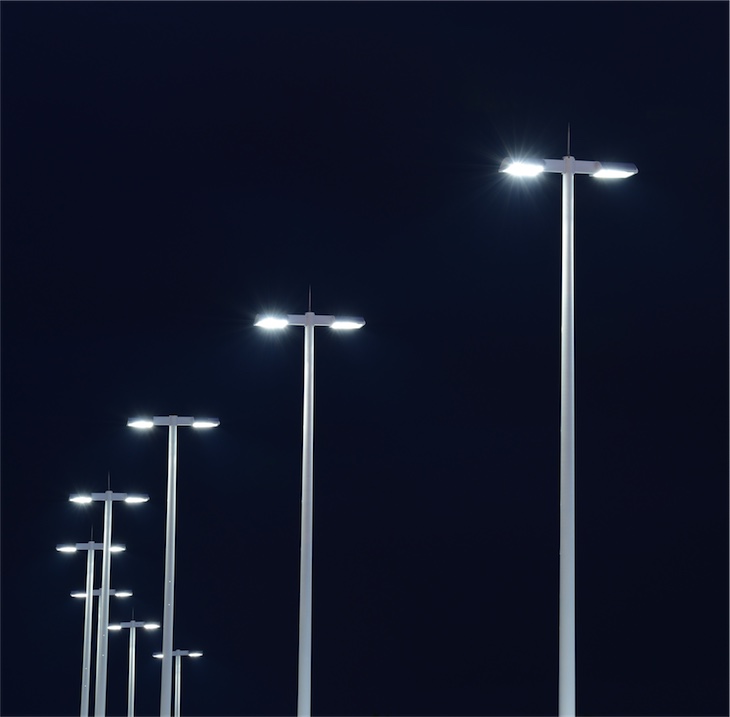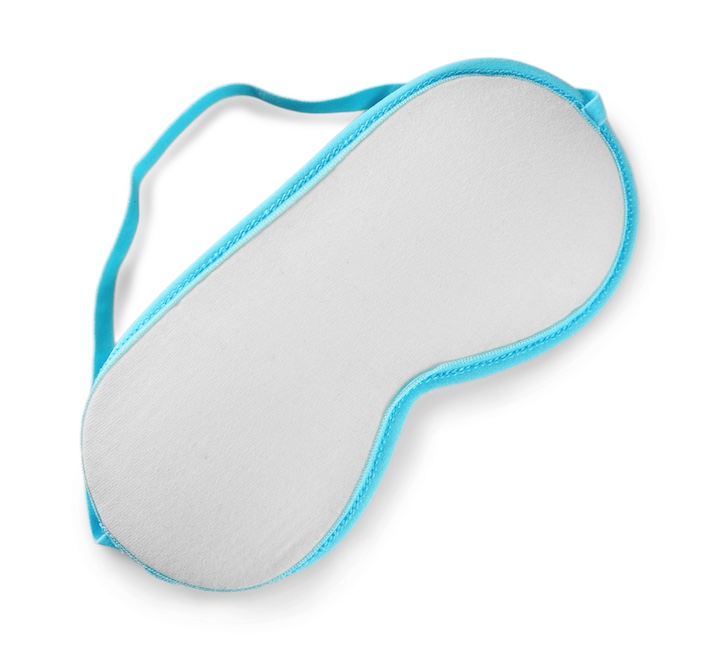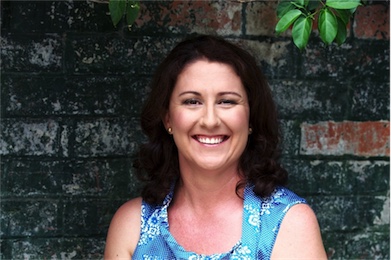Goodbye to the dark, dark night
When the first New York street bathed in the glow of electric light in 1879, it heralded a dramatic change in how our lives were structured. Taking control of the night allowed increased working hours, recreation, and security.
It’s almost impossible for modern humans to imagine a world without the blaze of artificial light. The Milky Way has become invisible to almost two-thirds of Europeans and 80% of Americans.
Is there (pardon the pun) a dark side to our love affair with light?
What are the health effects on humans (not to mention animals and plants) of artificial light at night (ALAN)?
An evolutionary perspective on night light
Before the boundaries of day and night becoming obscured around 140 years ago humans exposure to light at night was low. A full moon on a clear night provides 0.1-0.3 lux (Lux is a measurement of illumination), a candle 1 lux. A modern living room at night is between 100-300 lux. From an evolutionary perspective, it’s a big leap in a short time.
Has our physiology had enough time to adapt?
Light as pollution
Electric light is the fastest growing form of pollution with an average rise of 3-5% each decade. It not only affects humans; it’s also changing the way plants and animals live and reproduce.

A circadian rhythm out of time
Various rhythms control our biological process. The best studied of these is the circadian rhythm. Left to their own devices, our body clocks would run to a slightly longer than 24hour cycle. Exposure to daylight keeps them
Our circadian rhythm works like this: Photons of light hits the retina in your eye and stimulates a nerve which carries a message to a place in your brain called the suprachiasmatic nucleus (SCN). The SCN is like a conductor. It orchestrates the signals regulating your core body temperate, sleep/wake cycle and hormone production.
The circadian rhythm is under attack from the modern world. The issue is two-fold. Too little light during the day and too much at night.
There is no longer such a sharp contrast between night and day effectively has weakening and distorting (in the case of shift work) our circadian signals.
Colour temperature and wavelengths
It’s not just the level of illumination which is problematic. The
Effects of artificial light on sleep
Disruption of the circadian clock is most immediately noticeable on sleep. The result of repeated poor sleep quality insidiously starts to impact on blood sugar, hormones, reproductive function. This then flows on to issues with appetite, metabolic changes, reduced memory, focus and cognition, fertility, increased cancer and heart disease risk.
Melatonin
Melatonin is a hormone produced by the body to promote sleep. (Find out more about melatonin here). It’s released by darkness and inhibited by light. Melatonin essentially works by “switching off” physiological processes which keep you alert.
Dim light and melatonin
It’s probably pretty obvious bright blazing light will chase melatonin away. But, what most people would consider dim lighting also is no friend to melatonin.
Research shows melatonin suppression is impacted by levels of light of greater than 5 lux. An average e-reader provides 30-50 lux and a night light about 40lux.
Impacts on sleep
- Shallow sleep – less time spent in deep, slow wave sleep
- Reduced growth hormone – increased
ageing , interfering with fertility - Metabolic dysregulation, sugar cravings, weight gain and increased risk of developing Type 2 diabetes
- Reduced growth hormone – increased
- Increased night-time arousals or early morning awakenings resulting in fatigue and poor concentration the following day.
- Delayed sleep onset results in “melatonin” hangover the next morning where you feel groggy
- Rapid Eye Movement (REM) sleep is decreased. This may cause:
- Increased anxiety
- Loss of dream consolidation. Dreams help us cope better with psychological challenges.
- Increased risk of snoring and sleep-disordered breathing.
Cortisol and artificial light at night
Conversely melatonin’s opposing hormone, cortisol, is also impacted by artificial light, causing it to remain higher than it should. This dysregulates the hypothalamic-pituitary (HPA) axis causing:
- Problems going to sleep and staying asleep due to the suppressing effect on melatonin
- Increased risk of mood disorders. High cortisol is linked to certain types of depression and anxiety.
Other health issues associated with artificial light
Breast cancer
It has been observed female shift workers have an increased risk of breast cancer. One of the hypothesis as to why this might occur relates to melatonin suppressing effect on
High blood pressure
Melatonin causes an overnight drop in blood pressure. This decrease effectively gives your cardiovascular system a daily “rest”. If this doesn’t occur, it may contribute to hypertension.
Obesity
Animal studies show indications of genetic changes causing altered appetite and feeding patterns.
Impacts on plants and animals
The broader impacts of ALAN are now also being studied on wildlife and plants. Artificial light has been observed to prevent trees from adjusting to seasonal variations and alters the breeding cycles of animals.
Human survival is interlinked with plants and animals, and these seemingly subtle shifts may have more significant consequences which are not yet apparent.
What to do about it?
Night lighting is here to stay. It forms an essential part of modern lifestyles. We can’t all head off to the bush and live by candlelight. Most of us wouldn’t want to.
The challenge is to find the balance.
How we can get the benefits and limit the downsides of artificial light?
A role for government and public health
The big picture is that light pollution requires a

Street lighting designed to direct the light downwards
Individual actions
As an individual, you may have varying levels of control of your nighttime environment depending on if you are a homeowner or renter.
Things to consider for home buyers, builders or owners
- Types of light fixtures and fittings and installing dimmers
- Locating sleeping areas away from ambient street lights
- Timers/sensors on outdoor/security lighting
- Window coverings in bedrooms such as blackout curtains or blinds.
Things everyone can consider
During the night
- Switch off bright overhead lights and use warm
coloured , low-level lamp light which at least 90 minutes before bed. - At least one hour before bed, stop using
computer , tablets and smart phones.
In the bedroom
- Create the darkest possible environment. Use curtains and blinds if installed.
- Avoid using your phone as an alarm clock. Choose an old fashioned clock with a non-illuminated dial. If you keep your phone next to your bed position, it
face down so that any notifications that light up the screen will not be as visible. - Go
analogue with yournight time reading. Swap the tablets and e-reader for a book. - Remove, switch off or cover any standby lights on electronic equipment
- Use a sleep mask. These are useful if you have minimal control over your environment. They do take a little getting used to but once you do you’ll notice a difference in the quality of your sleep.

During the day
Make time to get outdoors. Try and get a total of at least 60 minutes a day of exposure to daylight to keep your circadian rhythm in good shape. (This doesn’t mean you need to stand in the direct sunlight).
Conclusion
The old saying as different as night and day may not be so applicable in a modern world, but by knowing the potential health effects and making a few changes, we can enjoy the benefits of ALAN and limit the impact on our sleep and health.
(References available on request)
If you enjoyed this article you may also like:
Sleep hygiene as part of your everyday routine

Need help with your sleep?
Norelle Hentschel is an experienced Naturopath with a clinic in Stones Corner, South East Brisbane and also offers Telehealth consults Australia wide. She enjoys supporting her clients to reach their health goals.
Want more articles like this?
Receive a monthly digest of natural health information to help you become “health” sufficient!
PS. Your inbox real estate is precious, and we will never annoy you with sales pitches or share your details with anyone else. One email a month — that’s it.


Great article!